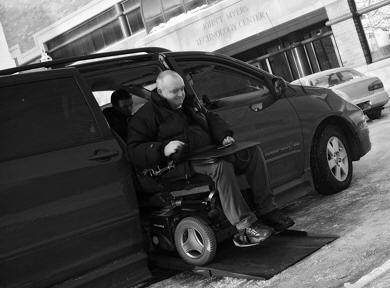 |
|
|
|
|
|
|||
|
By |
||||
 |
May 2, 2010 - For
20 years of his life, Errett "E.J." Bozarth spent nearly as much time in
a cockpit as he did on the ground.
Now, students at "We old pilots that have some experience have an obligation to mentor the younger pilots that are coming along, to kind of pass the baton to the next generation of aviators," Bozarth said. |
|||
|
|
||||
|
Bozarth's career
as a professional pilot officially ended in 1989 after an automobile
accident near his
"I think within
each of us there are varying degrees of innate drive to perform," he
said. "Through good fortune and no particular talent of my own I happen
to have, I guess, a personality that does not readily accept defeat or
challenges that I can't deal with."
He took part in a
Dallas-based vocational rehabilitation program in which he studied
computer science. The eight-month course helped him secure an internship
with Southwestern Bell Telephone. |
||||
|
The man who once
lived a high-energy lifestyle flying airplanes anywhere in the world has
become accustomed to traveling at a wheelchair's pace and working from
his home office.
"Pre-accident,
because of the type of work that I was in and what I was doing for a
living, I was not a particularly patient person," Bozarth said. "It was
a high-energy lifestyle and you didn't sit around a lot waiting for
things to get done. But when you become primarily dependent on other
people, you either learn some patience or you drive yourself crazy."
Bozarth says while
his AT&T career is satisfying, he couldn't refuse the opportunity to
return to the field of aviation when ISU Aviation Technology Department
Chair Harry Minniear asked him to teach one course on Turbine Aircraft
Systems this semester.
"He had a heck of
a reputation," Minniear said. "He was by far the guard unit's best
pilot, and he was destined for greatness."
Bozarth's class
teaches students about the electrical, hydraulic and pneumatic systems
of the aircraft and how to troubleshoot problems in the cockpit,
Minniear said, and Bozarth's thorough knowledge of the subject matter
helps him challenge students to give their best.
"There's a lot
more to aviation than you might think," Bozarth said. "You can teach
just about anyone to do the eye-hand coordination mechanics of flying an
airplane. It's not a difficult task. Being a great pilot is about
minimizing the time that you subject yourself your airplane or your
passengers to circumstances where you've got to use every bit of
aviating skill you have."
Bozarth is finding
teaching both rewarding and challenging. He said he spends quite a bit
of time adapting teaching demands to suit his physical limitations. For
example, he memorizes his lecture notes so that he doesn't have to rely
on cumbersome texts or notepads while addressing students.
Bozarth plans to
refresh his aviating skills when he gets inside a cockpit this summer.
He's recently purchased a Piper SportCruiser aircraft, and in it he will
teach his son how to fly.
Not only is
Bozarth looking forward to getting behind the controls of a plane again,
he's looking forward to seeing some of the views he's missed during the
last 20 years. |
| Other News Stories |
|
|
| ?AvStop
Online Magazine
Contact
Us
Return To News
|
|

